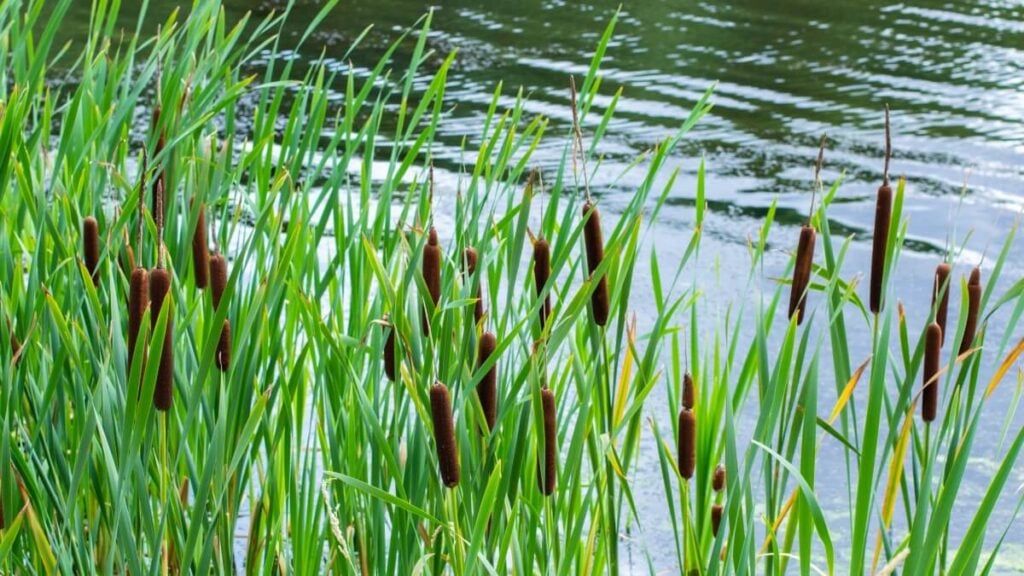Cattails
Other Common Names: hybrid cattail, graceful cattail, miniature cattail, southern cattail, narrow-leaved cattail, reed mace, cat-o’-nine-tails
(Typha latifolia)
Native
Cattails are most easily identified by their brown, cylindrical flowers.
Description
Cattail stems are four to eight feet tall with no branches and have a dense brown cylindrical flower (female) with a yellowish spike at the top (male flower). The flowers bloom through fall before turning into a white fluffy mass.
Cattails have flat to slightly rounded leaves that are thin and long. Cattails can be partially submerged or in boggy areas with no permanently standing water.
Typha is the genus, and there are 30 species of cattail within that genus. It is a perennial that grows in transitional areas that are going from wet to dry land. You can find it in wet lowlands and shallow waters. Cattails grow aggressively in wetlands from sea level to 7,000 feet and need managing like weeds.
Muskrats eat the rootstock and can create areas of open water. Many parts of the plant are edible at different stages of growth and have been used by humans as a food source throughout history.
Management Options
Location
Cattails can be found across the United States.
Propagation
seeds, rhizomes









